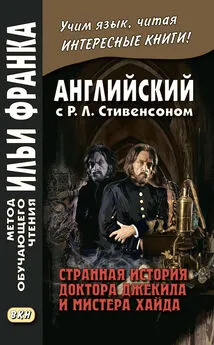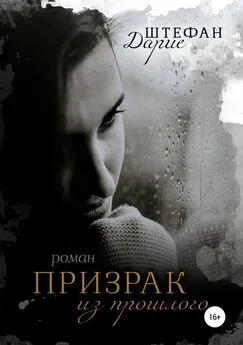Steven Dubner - Freakonomics
- Название:Freakonomics
- Автор:
- Жанр:
- Издательство:неизвестно
- Год:неизвестен
- ISBN:нет данных
- Рейтинг:
- Избранное:Добавить в избранное
-
Отзывы:
-
Ваша оценка:
Steven Dubner - Freakonomics краткое содержание
Freakonomics - читать онлайн бесплатно полную версию (весь текст целиком)
Интервал:
Закладка:
Executing 1 criminal translates into 7 fewer homicides: See Isaac Ehrlich, “The Deterrent Effect of Capital Punishment: A Question of Life and Death,”
American Economic Review 65 (1975), pp. 397–417; and Isaac Ehrlich, “Capital Punishment and Deterrence: Some Further Thoughts and Evidence,” Journal of Political Economy 85 (1977), pp. 741–88. / 125 “I no longer shall tinker with the machinery of death”: From Justice Harry A. Blackmun’s dissenting opinion in a 1994 Supreme Court decision denying review of a Texas death-penalty case: Callins v. Collins, 510 U.S. 1141(1994); cited in Congressional Quarterly Researcher 5, no. 9 (March 10,1995). It should be noted that American juries also seem to have lost their appetite for the death penalty—in part, it seems, because of the frequency with which innocent people have been executed in recent years or exonerated while on death row. During the 1990s, an average of 290 criminals were given the death sentence each year; in the first four years of the 2000s, that number had dropped to 174. See Adam Liptak, “Fewer Death Sentences Being Imposed in U.S.,” New York Times, September 15, 2004.
DO POLICE ACTUALLY LOWER CRIME? See Steven D. Levitt, “Using Electoral Cycles in Police Hiring to Estimate the Effect of Police on Crime,” American Economic Review 87, no. 3 (1997), pp. 270–90; Steven D. Levitt, “Why Do Increased Arrest Rates Appear to Reduce Crime: Deterrence, Incapacitation, or Measurement Error?” Economic Inquiry 36, no. 3 (1998), pp. 353–72; and Steven D. Levitt, “The Response of Crime Reporting Behavior to Changes in the Size of the Police Force: Implications for Studies of Police Effectiveness Using Reported Crime Data,” Journal of Quantitative Criminology 14 (February 1998), pp. 62–81.
/ 127 The 1960s as a great time to be a criminal: See Gary S. Becker and Guity Nashat Becker, The Economics of Life (New York: McGraw-Hill, 1997), pp. 142–
43.
NEW YORK CITY'S CRIME “MIRACLE”: The “Athenian period” quote came from an author interview with former police captain William J. Gorta, one of CompStat’s inventors. / 128 The broken window theory: See James Q. Wilson and George L. Kelling, “Broken Windows: The Police and Neighborhood Safety,”
Atlantic Monthly, March 1982. / 130 Bratton hiring more police in Los Angeles: See Terry McCarthy, “The Gang Buster,” Time, January 19, 2004.
GUN LAWS: Concerning the fact that the United States has more guns than it has adults, see Philip Cook and Jens Ludwig, Guns in America: Results of a Comprehensive Survey of Gun Ownership and Use (Washington: Police Foundation, 1996). / 131 The gun-crime link: See Mark Duggan, “More Guns, More Crime,” Journal of Political Economy 109, no. 5 (2001), pp. 1086–1114. / 131
Guns in Switzerland: See Stephen P. Halbrook, “Armed to the Teeth, and Free,”
Wall Street Journal Europe, June 4, 1999. / 132 The impotent Brady Act: See Jens Ludwig and Philip Cook, “Homicide and Suicide Rates Associated with Implementation of the Brady Handgun Violence Prevention Act,” Journal of the American Medical Association 284, no. 5 (2000), pp. 585–91. / 132 Felons buying black-market guns: See James D. Wright and Peter H. Rossi, Armed and Considered Dangerous: A Survey of Felons and Their Firearms (Hawthorne, N.Y.: Aldine de Gruyter, 1986). / 133 The gun-for-psychotherapy swap: See
“Wise Climb-Down, Bad Veto,” Los Angeles Times, October 5, 1994. / 133 Why gun buybacks don’t work: See C. Callahan, F. Rivera, and T. Koepsell, “Money for Guns: Evaluation of the Seattle Gun Buy-Back Program,” Public Health Reports 109, no. 4 (1994), pp. 472–77; David Kennedy, Anne Piehl, and Anthony Braga, “Youth Violence in Boston: Gun Markets, Serious Youth Offenders, and a Use-Reduction Strategy,” Law and Contemporary Problems 59 (1996), pp. 147–
83; and Peter Reuter and Jenny Mouzon, “Australia: A Massive Buy-back of Low-Risk Guns,” in Evaluating Gun Policy: Effects on Crime and Violence, ed. Jens Ludwig and Philip Cook (Washington, D.C.: Brookings Institution, 2003). / 133
John Lott’s right-to-carry theory: See John R. Lott Jr. and David Mustard, “Right-to-Carry Concealed Guns and the Importance of Deterrence,” Journal of Legal Studies 26 (January 1997), pp. 1–68; and John R. Lott Jr., More Guns, Less Crime: Understanding Crime and Gun Control Laws (Chicago: University of Chicago Press, 1998). / 133 John Lott as Mary Rosh: See Julian Sanchez, “The Mystery of Mary Rosh,” Reason, May 2003; and Richard Morin, “Scholar Invents Fan to Answer His Critics,” Washington Post, February 1, 2003. / 133–34 Lott’s gun theory disproved: See Ian Ayres and John J. Donohue III, “Shooting Down the
‘More Guns, Less Crime’ Hypothesis,” Stanford Law Review 55 (2003), pp. 1193–
1312; and Mark Duggan, “More Guns, More Crime,” Journal of Political Economy 109, no. 5 (2001), pp. 1086–1114.
THE BURSTING OF THE CRACK BUBBLE: For a discussion of crack’s history and particulars, see Roland G. Fryer Jr., Paul Heaton, Steven Levitt, and Kevin Murphy, “The Impact of Crack Cocaine,” University of Chicago working paper, 2005. / 134 25 percent of homicides: See Paul J. Goldstein, Henry H. Brownstein, Patrick J. Ryan, and Patricia A. Bellucci, “Crack and Homicide in New York City: A Case Study in the Epidemiology of Violence,” in Crack in America: Demon Drugs and Social Justice, ed. Craig Rein-arman and Harry G. Levine (Berkeley: University of California Press, 1997), pp. 113–30.
THE “AGING POPULATION” THEORY: See Steven D. Levitt, “The Limited Role of Changing Age Structure in Explaining Aggregate Crime Rates,”
Criminology 37, no. 3 (1999), pp. 581–99. Although the aging theory has by now been widely discounted, learned experts continue to float it; see Matthew L.
Wald, “Most Crimes of Violence and Property Hover at 30-Year Low,” New York Times, September 13, 2004, in which Lawrence A. Greenfield, director of the Bureau of Justice Statistics, says, “There is probably no single factor explanation for why the crime rates have been going down all these years and are now at the lowest level since we started measuring them in 1973. It probably has to do with demographics, and it probably has to do with having a lot of very high-rate offenders behind bars.” / 135 “There lurks a cloud”: See James Q. Wilson,
“Crime and Public Policy” in Crime, ed. James Q. Wilson and Joan Petersilia (San Francisco: ICS Press, 1995), p. 507.
THE ABORTION-CRIME LINK: For an overview, see John J. Donohue III and Steven D. Levitt, “The Impact of Legalized Abortion on Crime,” Quarterly Journal of Economics 116, no. 2 (2001), pp. 379–420; and John J. Donohue III and Steven D. Levitt, “Further Evidence That Legalized Abortion Lowered Crime: A Response to Joyce,” Journal of Human Resources 39, no. 1 (2004), pp. 29–49. /
136 Abortion studies in Eastern Europe and Scandinavia: See P. K. Dagg, “The Psychological Sequelae of Therapeutic Abortion—Denied and Completed,”
American Journal of Psychiatry 148, no. 5 (May 1991), pp. 578–85; and Henry David, Zdenek Dytrych, et al., Born Unwanted: Developmental Effects of Denied Abortion (New York: Springer, 1988). / 137 The Roe v. Wade opinion: Roe v.
Wade, 410 U.S. 113 (1973). / 138 One study has shown that the typical child: See Jonathan Gruber, Philip P. Levine, and Douglas Staiger, “Abortion Legalization and Child Living Circumstances: Who Is the ‘Marginal Child?’” Quarterly Journal of Economics 114 (1999), pp. 263–91. / 138 Strongest predictors of a criminal future: See Rolf Loeber and Magda Stouthamer-Loeber, “Family Factors as Correlates and Predictors of Juvenile Conduct Problems and Delinquency,”
Crime and Justice, vol. 7, ed. Michael Tonry and Norval Morris (Chicago: University of Chicago Press, 1986); also, Robert Sampson and John Laub, Crime in the Making: Pathways and Turning Points Through Life (Cambridge, Mass.: Harvard University Press, 1993). / 139 So does having a teenage mother: See William S. Comanor and Llad Phillips, “The Impact of Income and Family Structure on Delinquency,” University of California–Santa Barbara working paper, 1999. / 139 Another study has shown that low maternal education: Pijkko Rasanen et al., “Maternal Smoking During Pregnancy and Risk of Criminal Behavior Among Adult Male Offspring in the Northern Finland 1966 Birth Cohort,” American Journal of Psychiatry 156 (1999), pp. 857–62. / 139 Infanticide fell dramatically: See Susan Sorenson, Douglas Wiebe, and Richard Berk,
“Legalized Abortion and the Homicide of Young Children: An Empirical Investigation,” Analyses of Social Issues and Public Policy 2, no. 1 (2002), pp.
239–56. / 141 Studies of Australia and Canada: See Anindya Sen, “Does Increased Abortion Lead to Lower Crime? Evaluating the Relationship between Crime, Abortion, and Fertility,” unpublished manuscript; and Andrew Leigh and Justin Wolfers, “Abortion and Crime,” AQ: Journal of Contemporary Analysis 72, no. 4 (2000), pp. 28–30. / 141 Many of the aborted baby girls: See John J.
Donohue III, Jeffrey Grogger, and Steven D. Levitt, “The Impact of Legalized Abortion on Teen Childbearing,” University of Chicago working paper, 2002. /
142 Abortion worse than slavery: See Michael S. Paulsen, “Accusing Justice: Some Variations on the Themes of Robert M. Cover’s Justice Accused,” Journal of Law and Religion 7, no. 33 (1989), pp. 33–97. / 142 Abortion as “the only effective crime-prevention device”: See Anthony V. Bouza, The Police Mystique: An Insider’s Look at Cops, Crime, and the Criminal Justice System (New York: Plenum, 1990). / 142 $9 million to save a spotted owl: See Gardner M. Brown and Jason F. Shogren, “Economics of the Endangered Species Act,” Journal of Economic Perspectives 12, no. 3 (1998), pp. 3–20. / 142 $31 to prevent another Exxon Valdez –type spill: See Glenn W. Harrison, “Assessing Damages for the Exxon Valdez Oil Spill,” University of Central Florida working paper, 2004. /
142–43 Body-part price list: Drawn from the state of Connecticut’s Workers’
Compensation Information Packet, p. 27, available as of this writing at wcc.state.ct.us/download/ acrobat/info-packet.pdf.
5. WHAT MAKES A PERFECT PARENT?
THE EVER CHANGING WISDOM OF PARENTING EXPERTS: Ann Hulbert, Raising America: Experts, Parents, and a Century of Advice About Children (New York: Knopf, 2003) is an extremely helpful compendium of parenting advice. / 148 Gary Ezzo’s “infant-management strategy” and sleep deprivation warning: See Gary Ezzo and Robert Bucknam, On Becoming Babywise (Sisters, Ore.: Multnomah, 1995), pp. 32 and 53. / 148 T. Berry Brazelton and the
“interactive” child: T. Berry Brazelton, Infants and Mothers: Difference in Development, rev. ed. (New York: Delta/Seymour Lawrence, 1983), p. xxiii. /
148 L. Emmett Holt’s warning against “undue stimulation”: L. Emmett Holt, The Happy Baby (New York: Dodd, Mead, 1924), p. 7. / 148 Crying as “the baby’s exercise”: L. Emmett Holt, The Care and Feeding of Children: A Catechism for the Use of Mothers and Children’s Nurses (New York: Appleton, 1894), p. 53.
A GUN OR A SWIMMING POOL? See Steven Levitt, “Pools More Dangerous than Guns,” Chicago Sun-Times, July 28, 2001.
PETER SANDMAN ON MAD-COW DISEASE AND OTHER RISKS: See Amanda Hesser, “Squeaky Clean? Not Even Close,” New York Times, January 28, 2004; and “The Peter Sandman Risk Communication Web Site” at http://
www.psandman.com/index.htm.
HOW MUCH DO PARENTS REALLY MATTER? See Judith Rich Harris, The Nurture Assumption: Why Children Turn Out the Way They Do (New York: Free Press, 1998); for a Harris profile that also provides an excellent review of the nature-nurture debate, see Malcolm Gladwell, “Do Parents Matter?” The New Yorker, August 17, 1998; and Carol Tavris, “Peer Pressure,” New York Times Book Review, September 13, 1998. / 155 “‘Here we go again’”: See Tavris, New York Times. / 155 Pinker called Harris’s views “mind-boggling”: Steven Pinker,
Читать дальшеИнтервал:
Закладка:

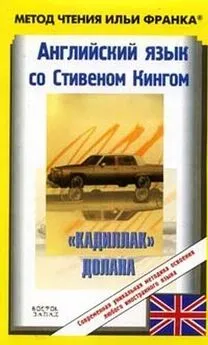
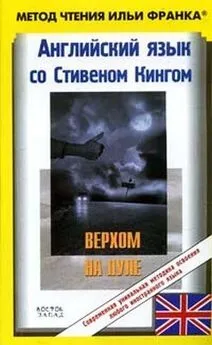

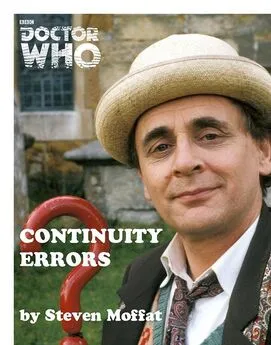
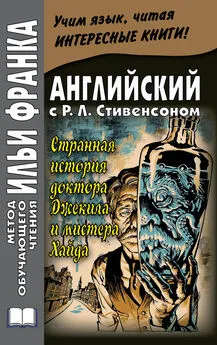
![Юрий Литвин - Stiffen corpses: Жизнь и работа коченеющих трупов [СИ]](/books/1078912/yurij-litvin-stiffen-corpses-zhizn-i-rabota-kochene.webp)
